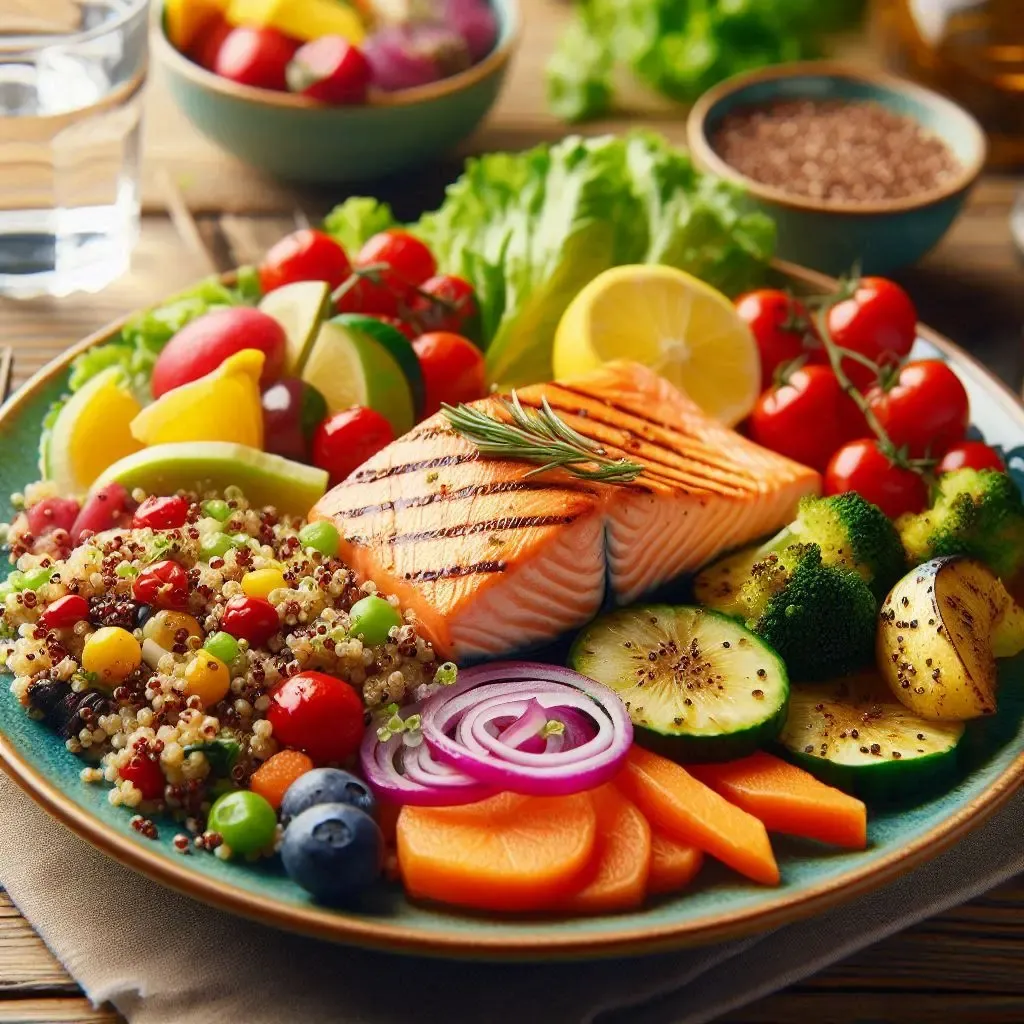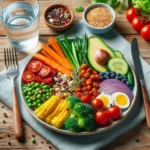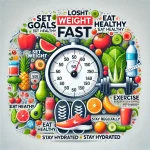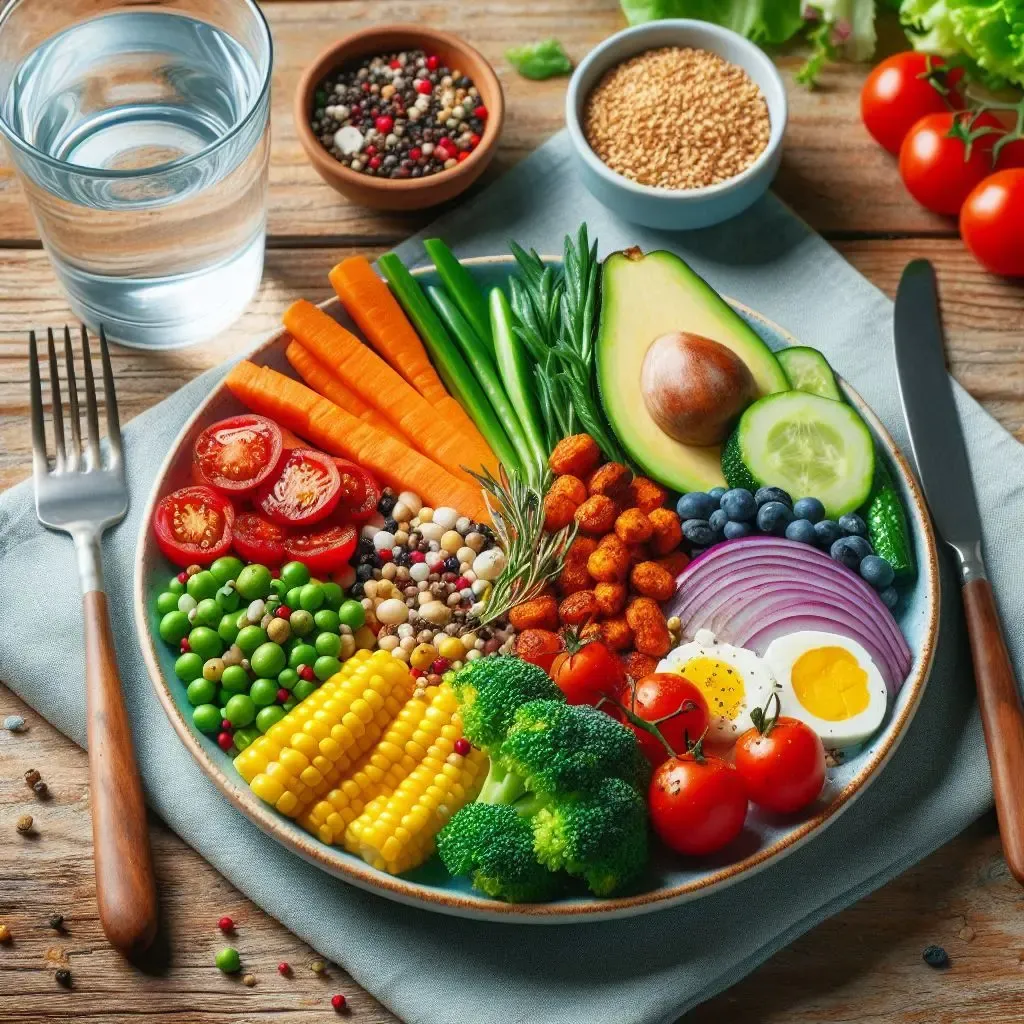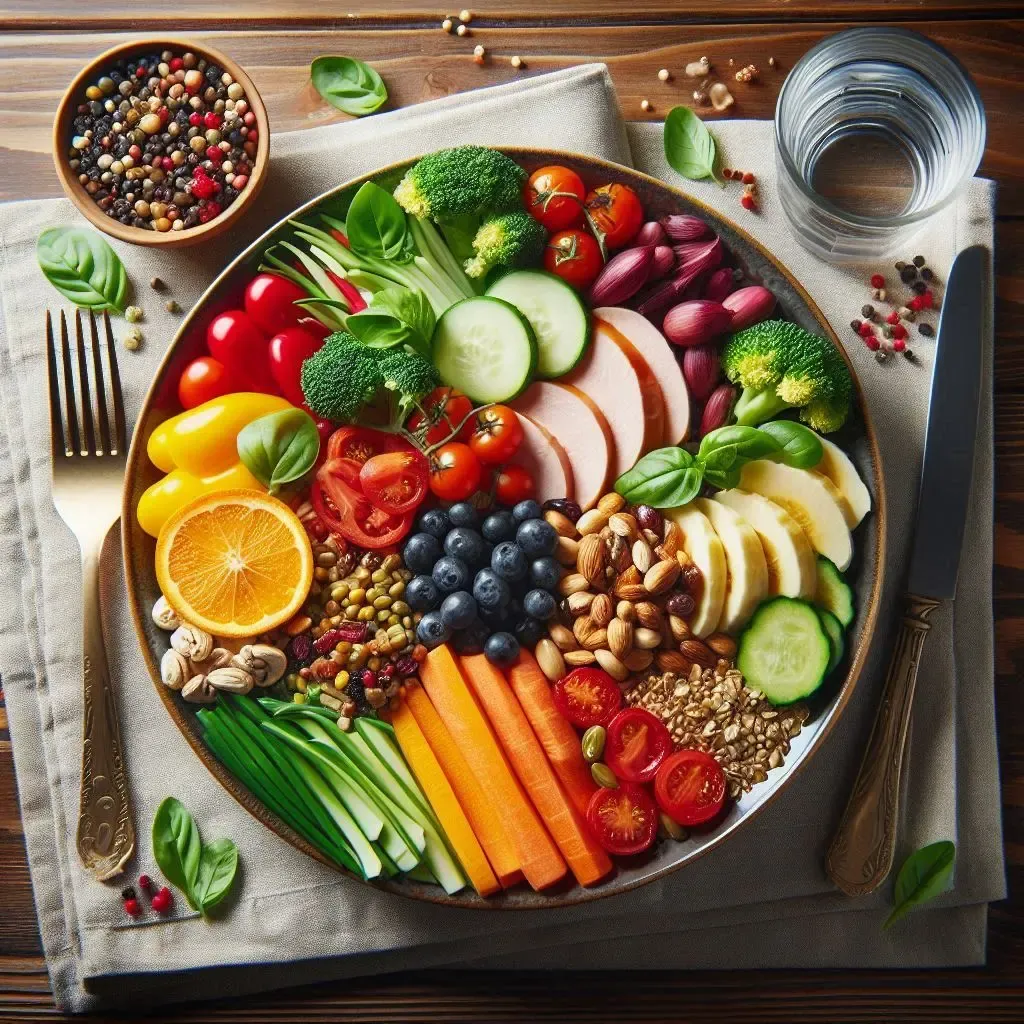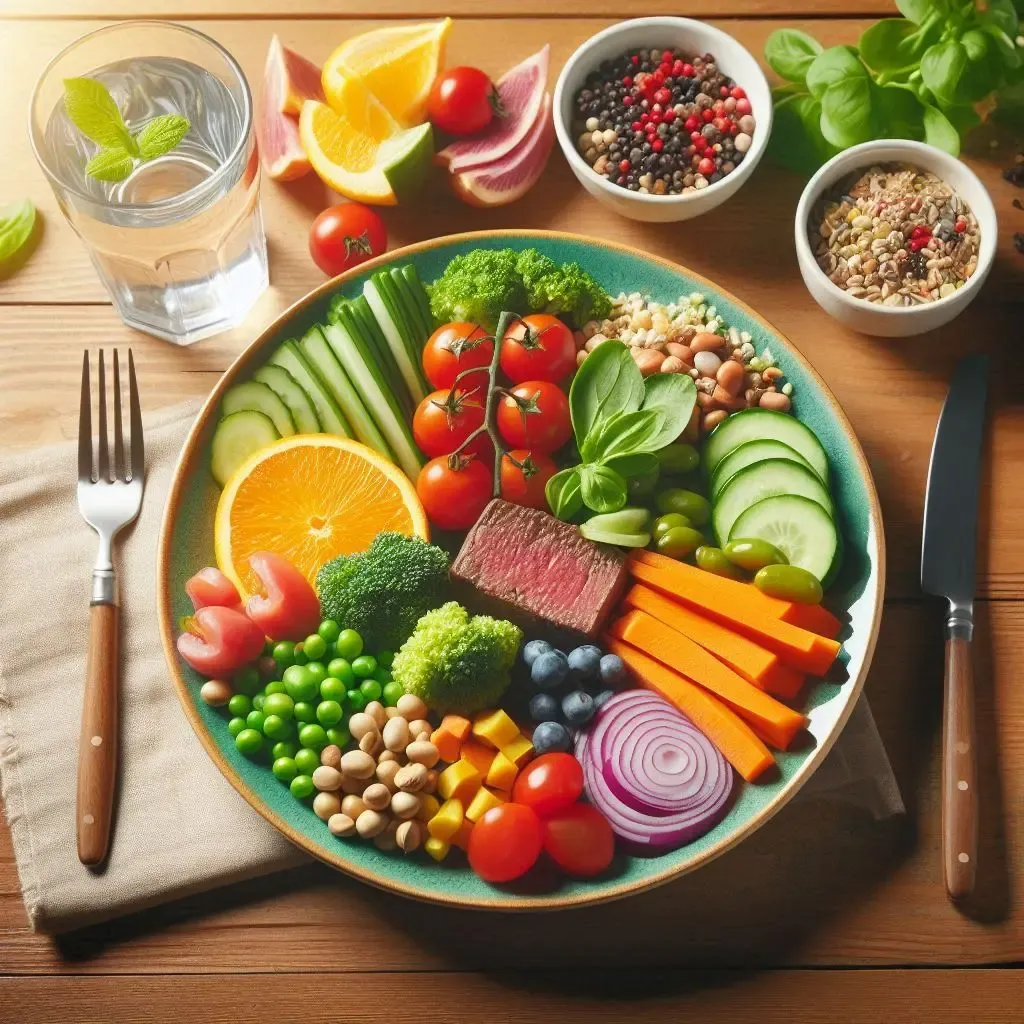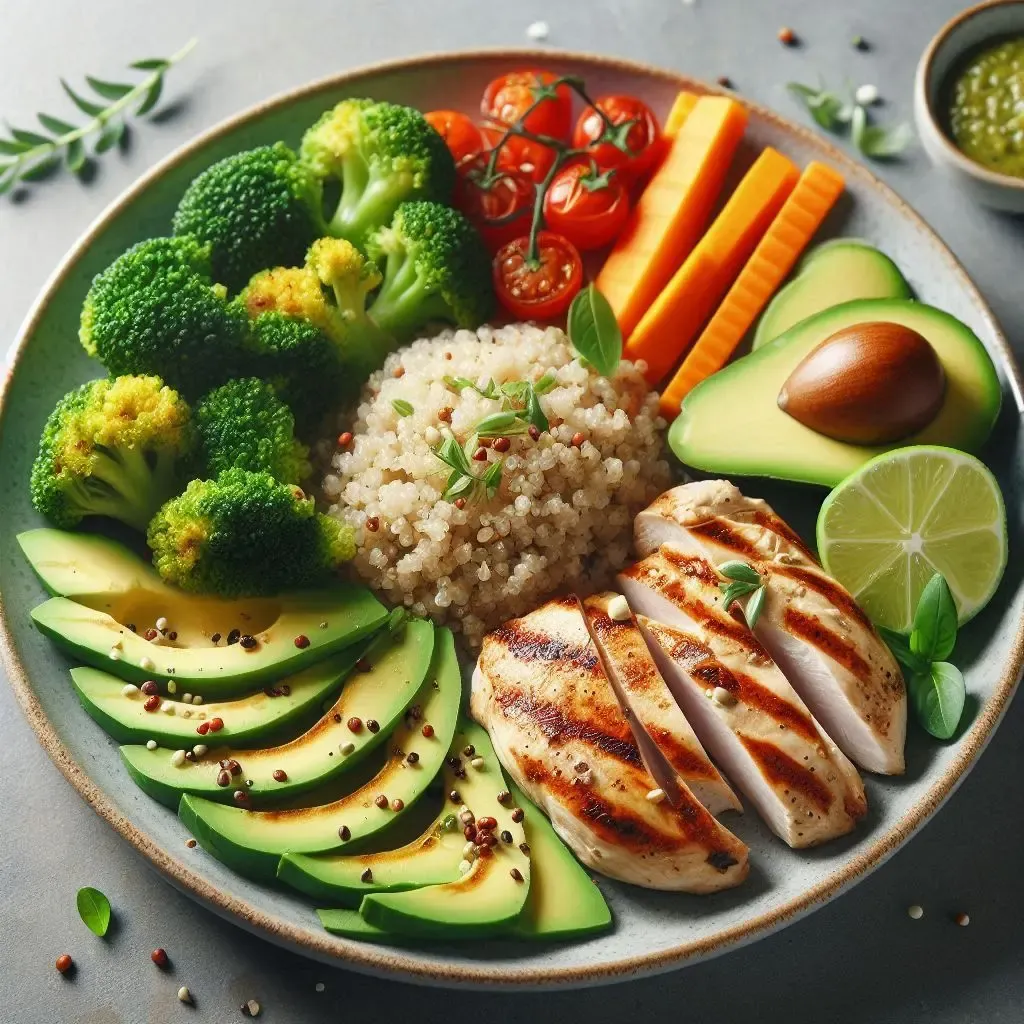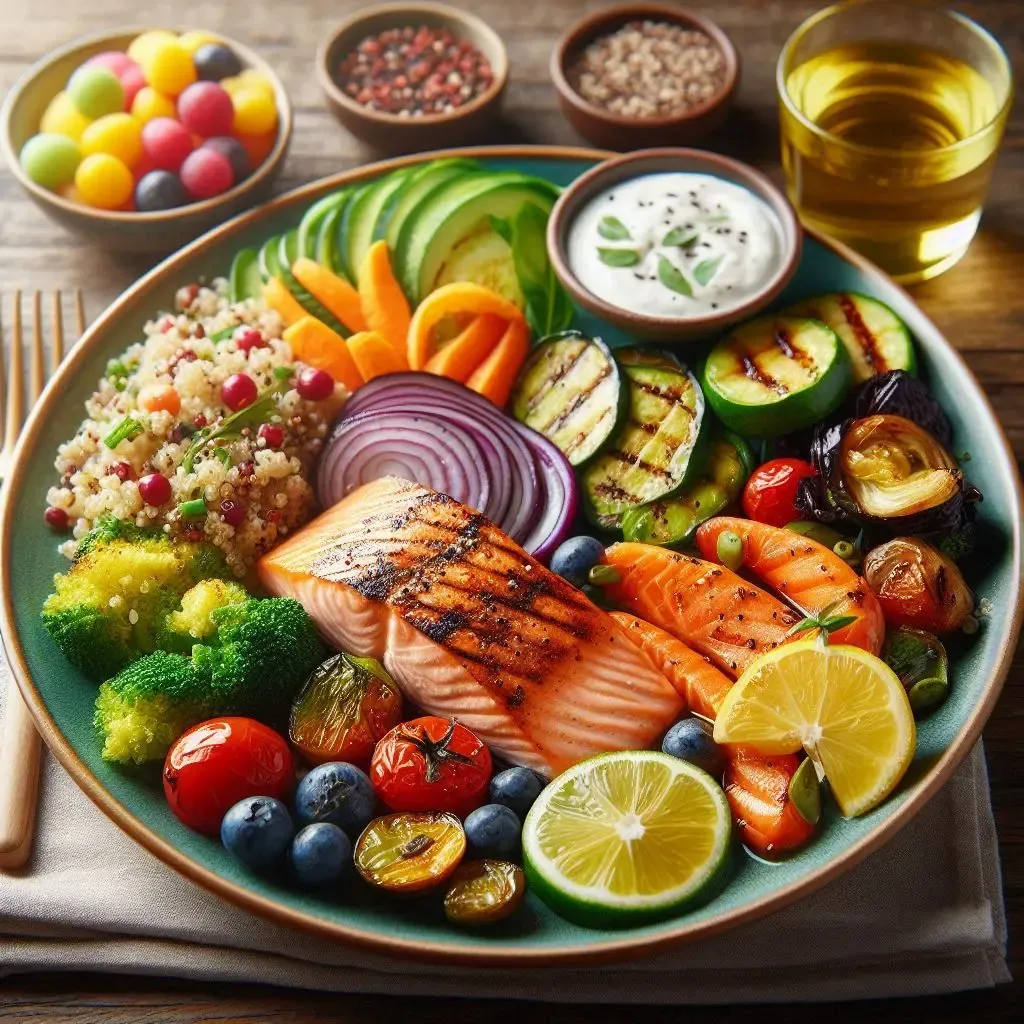
Table of Contents
Best Nutrition Meal Plan: A Comprehensive Guide
A well-balanced nutrition meal plan is essential for maintaining good health, boosting energy levels, and achieving specific fitness goals. It involves the right mix of macronutrients (proteins, carbohydrates, and fats) and micronutrients (vitamins and minerals) to meet your daily needs. Here’s a comprehensive guide to crafting the best nutrition meal plan for an average adult aiming for a healthy lifestyle.
1. Understanding the Basics
Before diving into the meal plan, it’s crucial to understand the fundamentals of a balanced diet:
- Macronutrients:
- Proteins: Essential for muscle repair, immune function, and hormone production. Aim for lean sources such as chicken, fish, beans, and tofu.
- Carbohydrates: The primary energy source. Opt for complex carbs like whole grains, fruits, and vegetables, which provide sustained energy and fiber.
- Fats: Vital for brain health, hormone production, and nutrient absorption. Focus on healthy fats like avocados, nuts, seeds, and olive oil.
- Micronutrients:
- Include a variety of fruits and vegetables to ensure adequate intake of vitamins and minerals, such as Vitamin C, D, iron, and calcium.
- Hydration:
- Drink at least 8-10 glasses (about 2 liters) of water per day. Proper hydration is essential for digestion, skin health, and overall body function.
2. The Ideal Meal Plan
This meal plan is designed for an adult with moderate activity levels (e.g., light exercise a few times a week) and a daily caloric intake of around 2,000-2,500 calories. Adjust portions and ingredients based on your specific caloric needs, activity level, and health goals.
Breakfast: 7:00 – 8:00 AM
- Oatmeal with Berries and Nuts
- 1/2 cup of rolled oats cooked in water or low-fat milk
- A handful of mixed berries (e.g., blueberries, strawberries)
- 1 tablespoon of chia seeds or flaxseeds
- A sprinkle of nuts (e.g., almonds, walnuts)
- Beverage: Green tea or black coffee (without added sugar)
This meal provides a balance of complex carbohydrates, fiber, and healthy fats, keeping you full and energized throughout the morning.
Mid-Morning Snack: 10:00 – 11:00 AM
- Greek Yogurt with Honey and Banana
- 1 cup of plain Greek yogurt
- 1 teaspoon of honey
- 1 small banana, sliced
This snack is rich in protein and probiotics, promoting digestive health and providing sustained energy.
Lunch: 12:30 – 1:30 PM
- Grilled Chicken Salad
- 100-150 grams of grilled chicken breast
- Mixed greens (e.g., spinach, kale, arugula)
- Colorful veggies (e.g., tomatoes, cucumbers, bell peppers)
- 1/4 cup of quinoa or brown rice
- Dressing: Olive oil, lemon juice, salt, and pepper
This lunch is a powerhouse of lean protein, healthy fats, and complex carbs, providing sustained energy and keeping you full until the next meal.
Afternoon Snack: 3:30 – 4:30 PM
- Apple Slices with Almond Butter
- 1 medium apple, sliced
- 1-2 tablespoons of almond butter
This combination offers fiber, healthy fats, and a touch of sweetness to curb mid-afternoon hunger.
Dinner: 6:30 – 7:30 PM
- Baked Salmon with Steamed Vegetables
- 150 grams of baked salmon (seasoned with herbs and lemon)
- Steamed vegetables (e.g., broccoli, carrots, asparagus)
- 1/2 cup of quinoa or sweet potato
Dinner should be light yet nutrient-dense, providing protein and essential omega-3 fatty acids from salmon, which are beneficial for heart health.
Evening Snack: 8:30 – 9:00 PM
- A Handful of Mixed Nuts or a Piece of Dark Chocolate (70% cocoa or higher)
This light snack satisfies sweet cravings while providing healthy fats and antioxidants.
3. Tips for Success
- Meal Prep: Plan and prepare your meals in advance to save time and avoid unhealthy choices.
- Portion Control: Be mindful of portion sizes to maintain a healthy weight.
- Variety: Include different foods to prevent nutrient deficiencies and keep meals interesting.
- Limit Processed Foods: Focus on whole, natural foods and minimize processed foods high in added sugars, salt, and unhealthy fats.
- Listen to Your Body: Adjust the meal plan based on your hunger levels, energy needs, and overall health goals.
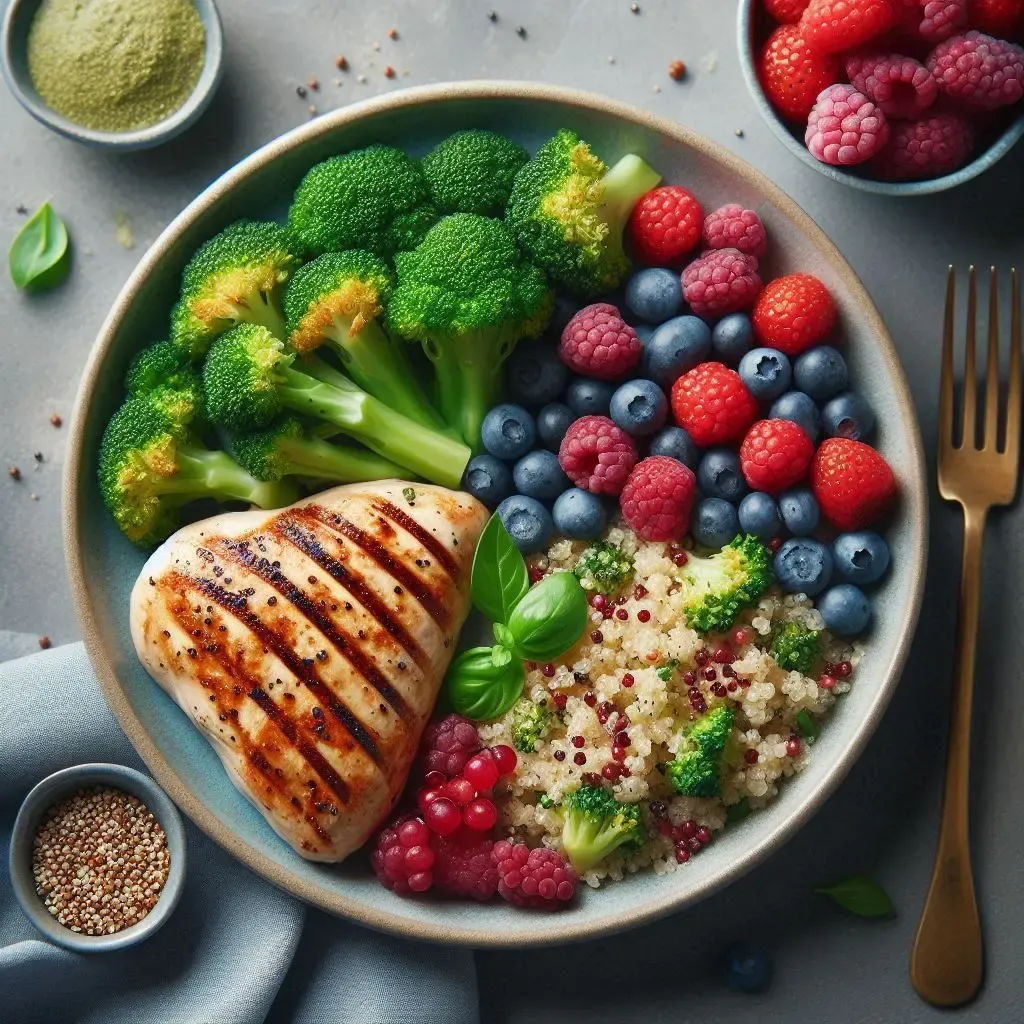
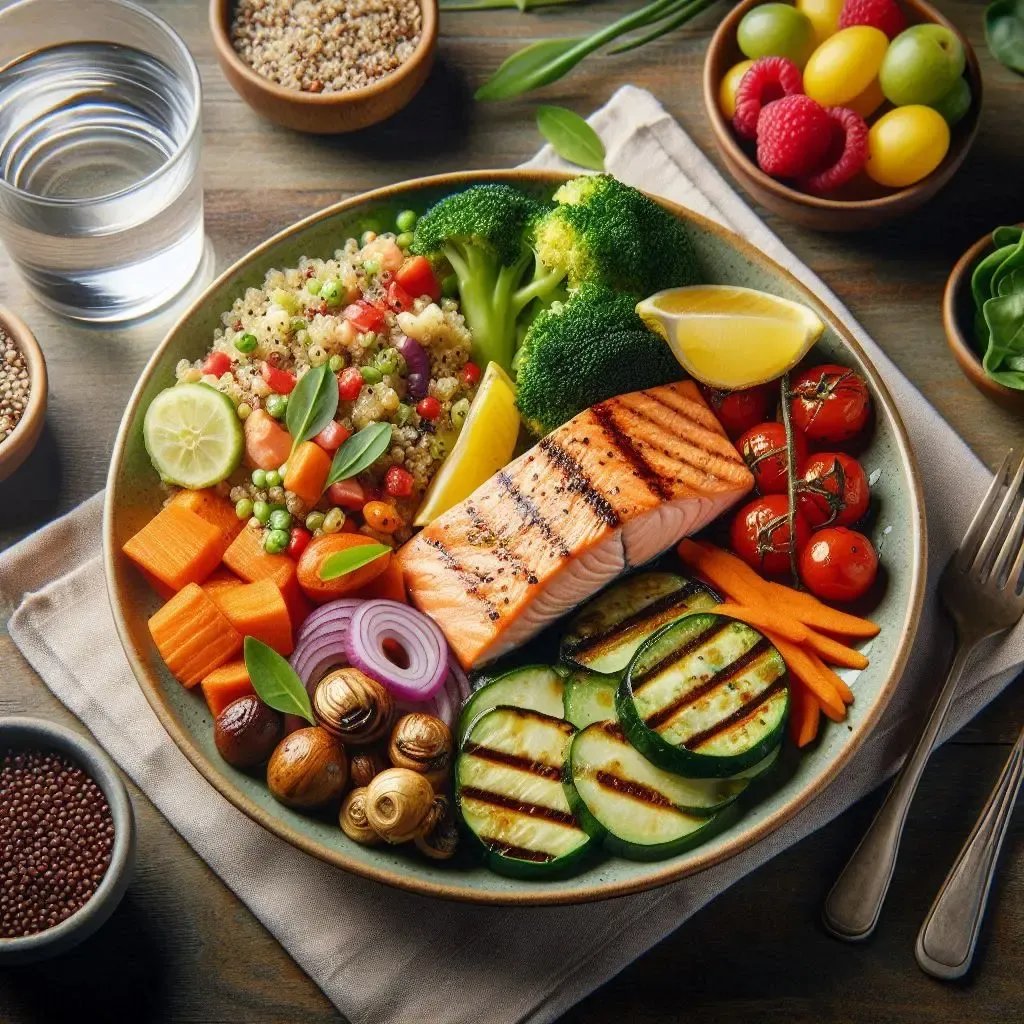
4. Conclusion
A balanced meal plan that includes a variety of nutrient-dense foods is key to maintaining good health, energy, and well-being. This sample plan offers a guideline, but personal needs may vary. Always consult with a healthcare provider or nutritionist to tailor your diet to your specific health goals and requirements. Remember, healthy eating is a lifestyle, not a temporary change.
How to Improve Your Sleep(8 Steps) – love a happy home (loveahh.com)

